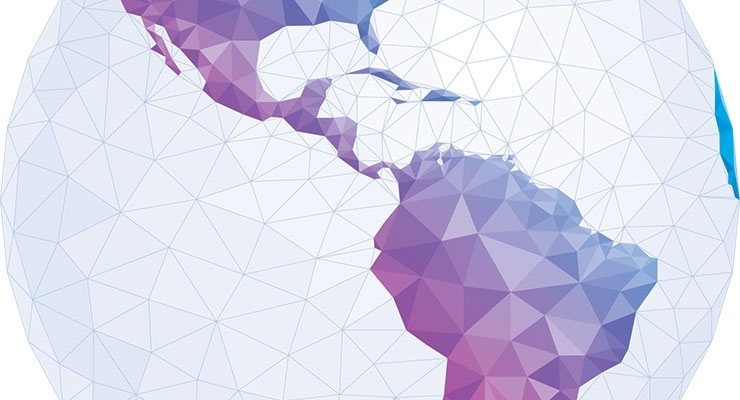
2016-11-14 16:45:17
TOP 20 Global Beauty Companies
2016-11-14 16:45:17
 News of mergers and acquisitions among both large and large—and large and small—beauty companies have captured headlines over the past year as brand manufacturers calculate where they can achieve their greatest success. The strategizing comes at a time when the industry is changing very rapidly and sales are being increasingly influenced by online tactics and social media. Still, cosmetic firms need to have a stake in traditional methods as well, as many retail outlets are thriving.
News of mergers and acquisitions among both large and large—and large and small—beauty companies have captured headlines over the past year as brand manufacturers calculate where they can achieve their greatest success. The strategizing comes at a time when the industry is changing very rapidly and sales are being increasingly influenced by online tactics and social media. Still, cosmetic firms need to have a stake in traditional methods as well, as many retail outlets are thriving.
Established leaders are reaching out to acquire smaller Indie brands that have soared to success via their aptitude for free thinking and attracting social media followers. Often this can create a win-win situation as the larger brand may be able to offer more global experience and distribution knowledge while the smaller brings digital savvy to the equation.
Power Players
Over the past year, The Estée Lauder Companies (ELC) and L’Oréal, two of the strongest leaders in the beauty industry have leveraged their stakes and balanced their offerings. L’Oréal purchased Urban Decay, NYX and IT Cosmetics for full Indie immersion, while ELC continued to follow its pure prestige leaning by acquiring niche fragrance brands, most recently By Kilian, to join its 2014 acquisitions of Editions de Parfums Frédéric Malle, Rodin Olio Lusso and Le Labo—but also appealing to Millennials with wildly popular consumer influencers including Kendall Jenner and Victoria Beckham.
Four of the largest players have made major portfolio changes. Coty’s acquisition of 41 P&G brands and Revlon’s purchase of Elizabeth Arden promise to keep the industry on its toes—and promise to re-order our list of Top 20 Global Beauty Companies for next year. Not to mention Avon selling off its North American business, and Shiseido Americas’ purchase of Gurwitch Products, with brands Laura Mercier and Revive.
Unilever suddenly stunned competitors a few months ago when it announced its purchase of Dollar Shave Club for $1 billion, instantly gaining a top position in the Men’s market.
A Growing Priority
Sustainable development now seems almost commonplace, as does a growing pledge to human rights. Nearly every company on this year’s Top 20 list set forth a plan for materials usage, manufacturing standards, ingredients and corporate social responsibility. Perhaps L’Oréal, which continues in its No. 1 slot on our roster, has set the most ambitious goals: Through its “Sharing Beauty with All” program, the world’s largest beauty company has the goal “by 2020 to have more sustainable business practices embedded into every aspect of our value chain. As part of this commitment, L’Oréal will ensure that 100% of our products show environmental or social improvement.”
Predominant Product Launches
Color Cosmetics continue to grow across the board with no sign of slowing. Beauty routines are enhanced with multi-step and multi-product rituals. Masks are tightening and moisturizing body parts from face to feet. Spritzing water for extra hydration while on the run is growing in popularity in the West. And a flurry of in-shower moisturizers and dry shampoos that save on water have entered Mass Market aisles. On the Prestige side, a number of luxurious fragrances made their debut in knockout packaging, and quite a few offer a refillable option.
Looking Ahead
L’Oréal stated in its 2015 annual report that sales in the global beauty market had reached about $222 billion, and that with growth at +3.9%, the worldwide cosmetics market was stronger for the year.
The Estée Lauder Companies reported: “Global prestige beauty remains a vibrant industry estimated to grow approximately 4% to 5%.”
Still, there’s no getting around the challenging year ahead. For example, for first-half 2016, Unilever’s sales increased by 5.4% at constant exchange rates and decreased by 2.6% at current exchange rates. Paul Polman, chief executive officer, stated: “We have been preparing ourselves for tougher market conditions in 2016 and do not see any sign of an improving global economy.”
Just a note on the compilation of this report: Companies were analyzed according to 2015 data. Beauty sales included only cosmetics, fragrance and personal care items when possible. Figures for companies outside the U.S. were based on the exchange rate for the fiscal year on the day it ended. Estimates are provided in cases where full disclosure was not available.
Company Beauty Sales
1. L’Oréal $27.6 billion
2. Unilever $22.3 billion
3. Procter & Gamble $18 billion
4. Estée Lauder $11.3 billion
5. Colgate-Palmolive $10.7 billion
6. Johnson & Johnson $7.1 billion
7. Shiseido $6.3 billion
8. Beiersdorf $6 billion
9. Kao $5 billion
10. LVMH $5 billion
11. AmorePacific $4.8 billion
12. Avon $4.6 billion
13. L Brands $4.4 billion (est.)
14. Coty Inc. $4.3 billion
15. Henkel $4.2 billion
16. Mary Kay $4 billion
17. Chanel $2.9 billion
18. Kose $2.2 billion
19. Natura $2 billion
20. Revlon $1.9 billion
Looking for Lipstick container?
please visit www.topbeautysh.com for more cosmetic packaging information.
LinkedIn




